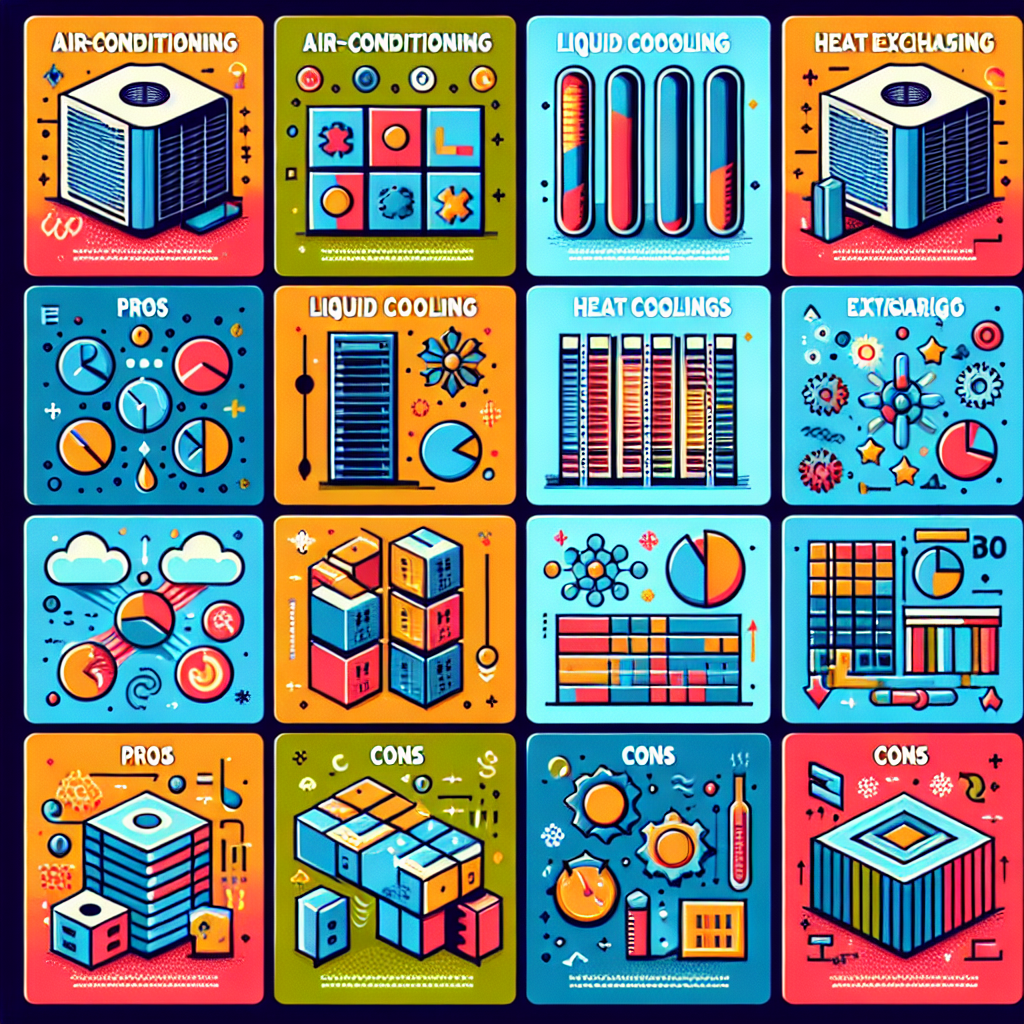Your cart is currently empty!
Comparing Different Data Center Cooling Methods: Pros and Cons

Data centers are essential for storing and processing large amounts of information for businesses and organizations. However, all the equipment in a data center generates a significant amount of heat, which can lead to overheating and equipment failure if not properly managed. That’s where data center cooling methods come into play.
There are various methods for cooling data centers, each with its own set of pros and cons. Let’s take a closer look at some of the most common data center cooling methods:
1. Air Conditioning (CRAC/CRAH):
One of the most traditional methods of cooling data centers is through air conditioning units, such as Computer Room Air Conditioners (CRAC) or Computer Room Air Handlers (CRAH). These units work by removing hot air from the data center and replacing it with cooler air. While effective at maintaining a consistent temperature, air conditioning units can be costly to operate and maintain. They also consume a lot of energy, leading to high electricity bills.
Pros:
– Provides precise temperature control
– Can handle high heat loads
– Widely used and understood technology
Cons:
– High energy consumption
– Expensive to operate and maintain
– Limited scalability
2. Chilled Water Cooling:
Chilled water cooling systems use water to remove heat from the data center equipment. The water circulates through a network of pipes and absorbs heat from the equipment before being cooled down and circulated back. While more energy-efficient than air conditioning units, chilled water cooling systems can be complex to install and maintain.
Pros:
– Energy-efficient
– Can handle high heat loads
– More environmentally friendly than air conditioning
Cons:
– Requires a dedicated water supply
– Complex installation and maintenance
– Risk of leaks or water damage
3. Direct Expansion (DX) Cooling:
DX cooling systems use refrigerant to cool the air in the data center. The refrigerant absorbs heat from the air and then releases it outside the data center. While DX cooling systems are relatively cost-effective and easy to install, they can be less energy-efficient than other cooling methods.
Pros:
– Easy to install
– Cost-effective
– Can handle moderate heat loads
Cons:
– Less energy-efficient than other methods
– Limited scalability
– Requires regular maintenance
4. Evaporative Cooling:
Evaporative cooling systems use water to cool the air in the data center. The water evaporates, absorbing heat from the air and lowering the temperature. While evaporative cooling systems are energy-efficient and environmentally friendly, they may not be suitable for all climates.
Pros:
– Energy-efficient
– Environmentally friendly
– Cost-effective
Cons:
– Not suitable for humid climates
– Requires a consistent water supply
– Limited scalability
In conclusion, there are various data center cooling methods available, each with its own set of pros and cons. It’s essential for businesses and organizations to carefully consider their cooling needs, budget, and environmental factors when choosing a cooling method for their data center. By selecting the right cooling method, data centers can operate efficiently and effectively while minimizing the risk of equipment failure due to overheating.

Leave a Reply